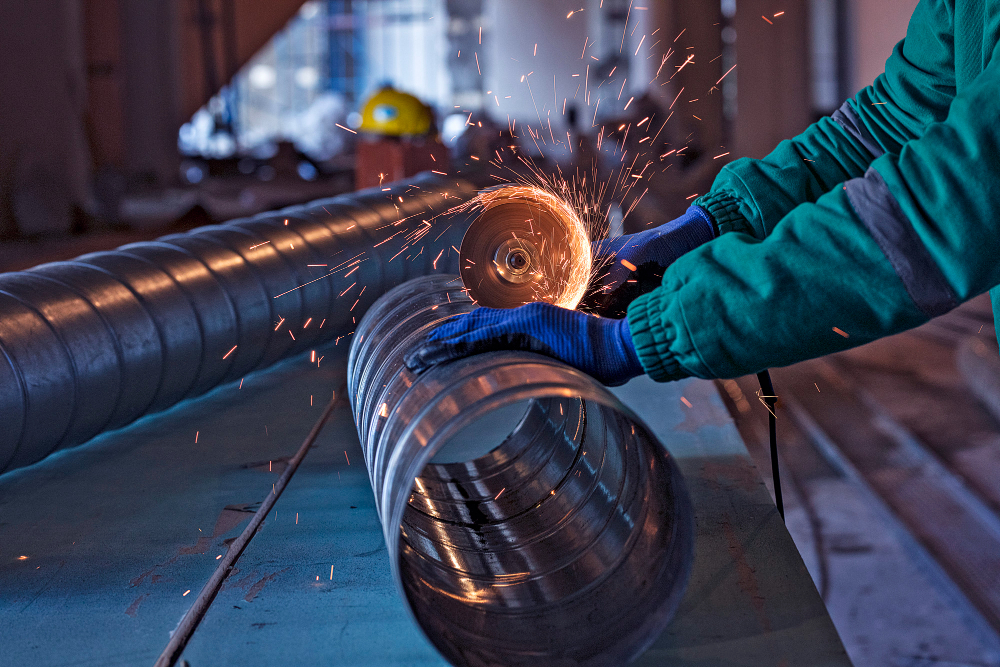Steel is among the most widely available and versatile metals. It is used in numerous objects of all shapes and sizes worldwide. But did you know that steel isn’t metal? You may be shocked to learn so, but steel is an alloy of carbon and iron. An alloy is a combination of 2 or more chemical elements, out of which one is a metal. Since iron is a metal that combines with carbon, a non-metal, steel can not be categorized as a metal. Hence, iron and carbon are the defining elements of steel, a resulting alloy. Calvi SpA is one of the best Steel producers that produce Special Steel Profiles in all the main types of steel such as alloy, carbon, common, etc.
Iron (F) is the base metal of steel. It is alloyed with Carbon (C) and several other elements to create a successful alloy. Iron is very soft and weak by itself. Hence, the second element must be the mixture’s strengthening or hardening agent. Carbon is a hard non-metal that adds to the strength of the alloy. This is the element that gives the steel its hardened durability. You may also inspect the iron’s properties in the malleability and ductility of steel. These coexisting properties make steel a multipurpose and adaptable material.
Above, we discussed the two prime and most important elements of steel. There are plenty of other metallic and non-metallic elements that alloy with steel. Each of these carries a defining property that elevates steel’s usual properties. Let us take a detailed look at all compatible choices and understand their qualities and roles.
Important Elements of Steel
- Copper (CO): It is used for alloys that need hard-wielding properties that are highly corrosion resistant.
- Aluminium (Al): It acts as a greatly beneficial deoxidizing agent. The presence of aluminum enhances the steel’s grain refinement properties and also controls the austenite grain growth.
- Lead (Pb): Lead is said to have almost little to no change in steel’s mechanical properties. Despite this insignificant difference, lead is said to increase the machinability of steel.
- Manganese (Mn): The addition of manganese is highly variable in the carbon content. It has a significant impact on the hardness and strength of the alloy.
- Nickel (Ni): Nickel’s addition in steel has similar impacts as aluminum. In addition, it also acts as an austenite stabilizer and contracts the steel’s ferrite region.
- Vanadium (V): When used with other alloying elements, Vanadium can improve the substance’s fatigue stress and increase the wear resistance. This element is also responsible for retarding grain growth by allowing high quenching temperatures.
- Zirconium (Zr): The addition of this element increases the dispersion strengthening and reduces the austenite grain size. It is also said to improve the standard of machinability, ductility and toughness.
- Boron (B): Even smaller quantities of Boron have an increasingly positive impact on steel’s abrasion resistance and hardenability. It also results in high neutron absorption capability.
- Chromium (Cr): This element increases steel’s resistance to high-temperature exposure and oxidization.
- Titanium (Ti): Its main purpose is to refine the steel’s grain quality. Other than this, titanium also helps reduce the element’s corrosion.
- Molybdenum (Mo): It lowers the required quench rate during the heat-treating process, which further results in the hardenability of steel.
These are only a few of the compatible elements that are involved in steel composition. Some elements, such as phosphorus, may also be considered undesirable for steel alloys. Not all alloys are suitable for all types of uses. There is a category of steels known as high-strength low-alloy (HSLA) steels with low carbon levels and small amounts of additional elements. These are required in daily-use objects such as gas pipelines, ships, and storage tanks. For heavier and more intensive work such as construction, electricity and automobiles, alloys with ductile and malleable elements are preferred. If you want to know more about the steel then you need to have a look one of the best Calvi Special Steel Profiles here.
Concluison
With that, we conclude our discussion about the elements of steel. Iron and carbon are the main deciding elements of steel. Additionally, we have listed about ten other elements that are alloy with steel to serve multi purpose functions and purposes. Different uses have different properties that may be suitable for varying occasions. You must check your requirements to pick the right type of alloy to get the maximum benefits.


















